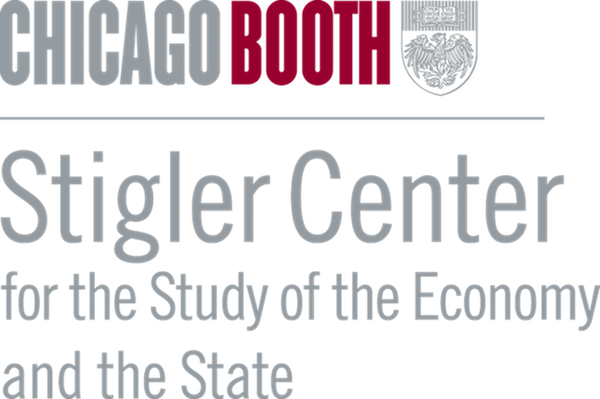Allen Grunes comments on the core continuity in antitrust enforcement between the Biden and second Trump administrations. He argues that the continuity reflects, in Zephyr Teachout’s words, the “homecoming” of antitrust to the “domain of law.” The following is a revised version of remarks Grunes delivered at the Loyola Antitrust Colloquium in April.
Zephyr Teachout’s paper, “Homecoming: Antitrust as the Domain of Law,” written last summer, looks back at the first three years of antitrust enforcement in the Biden administration. The overarching theme of the paper is that antitrust is finally back where it belongs, in the domain of law, after a sustained stay in the domain of economics. Teachout focuses on why top Biden enforcers rejected the consumer welfare standard, with “its natural gravitational pull towards prices and outputs,” and how antitrust law had returned to “what it was designed to do,” namely, “be a prophylactic against concentrated power and the measurable and immeasurable harms that such power causes.”
The title of Teachout’s paper strikes me as a pitch-perfect response to a charge that was often made about Biden-era antitrust enforcement. Critics called it “hipster antitrust,” a “fad,” a desire to go back to the “bad old days” before the emergence of a “broad agreement that the general purpose of the antitrust laws was to advance consumer welfare.” A “fad” is something fleeting. “Bad old days” implies a regression, turning back the clock. Teachout’s title neatly parries this attack. It counters metaphors based on time with a metaphor based on place: Antitrust is back where it belongs, in its own country. And that is not a fad.
Teachout’s paper was written before the 2024 election. Given the presidential transition, it is appropriate to ask whether the premise of the paper is still true: Is antitrust still in the “domain of law” in the Trump administration? I think the answer is yes. So far, at least, there has been a remarkable degree of continuity between the Biden and Trump administrations in antitrust enforcement, particularly in terms of merger policy and the Big Tech cases. The continuity, in other words, is not skin deep, or just cheap talk. It is at the core.
However, if antitrust is to make the domain of law its home rather than just another sojourn, there must be a well-developed theory to replace consumer welfare. What that theory will look like is not yet clear, though the most promising candidate is a market power test.
Core similarities
Teachout argues that the 2023 Merger Guidelines were drafted in such a way as to show the primacy of law over economics: “The Guidelines, notably, are heavy on legal citations, using cases, legislative history and the plain meaning of statutory language.” This was in stark contrast to the 1982 Guidelines and every later iteration. Before 2023, to quote Eleanor Fox, “economics was king.”
President Donald Trump named Andrew Ferguson as chairman of the Federal Trade Commission. Ferguson’s decision to retain the 2023 Merger Guidelines took the antitrust bar completely by surprise. However, if we accept the premise that antitrust has returned to the domain of law, it should not have come as a surprise. Ferguson justified the decision to retain the 2023 Guidelines primarily on the grounds of stability, predictability and resource constraints. But in a Wall Street Journal interview he went further, remarking: “I reject the very narrow view of antitrust that the only two things we need to care about are price and output. That isn’t what the law says.” This comment is noteworthy and underlines the first striking similarity between the Biden and Trump antitrust regimes.
Next consider the Big Tech cases. One of the great achievements of Biden-era antitrust was to restore monopoly enforcement to its rightful place at the top of the antitrust hierarchy. About a decade ago, before he was assistant attorney general for Biden, I recall Jonathan Kanter saying that it was worse to have an unenforced Section 2 of the Sherman Act—which addresses monopolization—on the books than to have no statute at all. By the end of his tenure at the Department of Justice Antitrust Division, Kanter was able to say: “Section 2 is alive and well. Monopoly enforcement is the cornerstone of antitrust law.”
After the administration changed hands, one reasonably could have expected a retreat from monopoly enforcement. That was what happened in 2001, when the Microsoft case, litigated by the Clinton DOJ, was settled a few months after Charles James took over at the Antitrust Division for the Bush administration. Not so this time. Shortly after she was confirmed as Trump’s pick to replace Kanter, Assistant Attorney General Gail Slater gave a speech in which she both reaffirmed the primacy of monopoly enforcement and discussed issues that in the past would have been regarded as “non-economic” concerns. Speaking about the pending Google Search case, she said:
Google has called the DOJ’s proposed remedies “dangerous” and “irresponsible.” Not so. You know what is dangerous? The threat Google presents to our freedom of speech, to our freedom of thought, to free American digital markets. You know what is irresponsible? Leaving Google’s monopoly abuse unaddressed.
Over at the FTC, something similar has been taking place. Last month the Wall Street Journal Editorial Board put out an editorial criticizing the FTC’s decision to continue to pursue litigation against Meta. The Wall Street Journal quoted Chairman Ferguson as saying, “I think monopoly can be as dangerous in many ways as big government.” The editorial was captioned: “Is Lina Khan Back at the FTC?”
Differences on the margins
The continuity in merger policy and Section 2 enforcement are notable. However, there are also some fairly obvious places where there is no continuity.
One cannot expect an FTC commissioner who questioned the FTC’s competition rule-making power to do an about-face now that he is chairman. And the Trump administration’s “anti-woke agenda” is likely to direct the litigation envelope as it searches for cases involving collusion on environmental, social and governance initiatives. Whether such cases are out there is an open question, but the theory itself is not novel. In 1969, the DOJ sued all the major domestic automobile and truck manufacturers for violating the Sherman Act by conspiring to delay or prevent the introduction of vehicular exhaust emissions control devices from 1953 onward.
In fairness, one could say that the Biden-era FTC’s decision to enact a rule banning nearly all non-competes stretched the agency’s rule-making authority, and its decision to resurrect Robinson-Patman pushed the litigation envelope.
These are real differences and they will undoubtedly influence some of matters that are pursued as well as some of the matters that are dropped. However, it is noteworthy that the similarities go to the core of what the antitrust agencies do; the differences are on the margins.
Where is antitrust heading?
Teachout’s paper opens by celebrating the “retirement” of the consumer welfare standard after 50 years. I will end with the question: Where does antitrust appear to be heading?
I was struck by something Luigi Zingales said a while back: Although it is well-accepted that the consumer welfare standard is not enough, you only beat a theory with another theory and the alternatives are not as well thought out. This was not a complaint about Biden-era enforcement, only a call for more attention to theory.
Various candidates were offered before and during the Biden administration as possible replacements for consumer welfare, including “protection of the competitive process.” That at least sounds more like law than economics. But the criticism of “protecting the competitive process” is that it is not really a standard at all, let alone a workable legal standard. As Herbert Hovenkamp has written:
As an abstract proposition it may claim broad assent, but there is little room for optimism that it can ever be a useful device for making real decisions. Antitrust lawyers can assert protection of the competitive process as a goal, just as economists can proclaim a commitment to “free markets,” or lawyers may urge people to “do justice.” But these slogans do little to narrow the range of disputes.
Teachout’s retirement party for consumer welfare also seems a bit premature, as both Slater and Ferguson have publicly said they will apply an expanded version of the consumer welfare standard. Such an expanded version would include non-price considerations—for example, the collection and use of data. (Former Assistant Attorney General Makan Delrahim said something similar during the first Trump administration.)
FTC Commissioner Mark Meador recently put out a thoughtful paper suggesting that consumer welfare should be understood to mean “consumer surplus” (“the net benefits to real consumers”) and such a view is much more consistent with legislative history than the way consumer welfare generally has been framed to combine consumer and producer surplus and achieved through efficiencies. He notes that as early as the Sherman Act debates, “many members of Congress believed that efficiency should not excuse even a fairly-obtained monopoly, that size alone was in fact a danger. By the time of the Clayton and Celler-Kefauver Acts, that conclusion was inescapable.” Meador also asserts the primacy of law over economics: “Because antitrust law involves the oversight of markets and economic power, economic analysis will always play an essential role in its application. But its role must be that of servant, not master.” Meador’s approach would be a terrific step forward, and one that is sorely needed in the era of big data and personalized pricing.
Still, if I had to bet, my bet would be that a market power test eventually emerges to replace consumer welfare. Market power has the virtue of being a prerequisite for most types of competition law violations, consistent with the law and legislative history and easier for a judge to understand and apply than consumer welfare. It also fits well with the restoration of Section 2 to the top of the antitrust hierarchy, as monopolists have a great deal of market power. While still deeply rooted in economics, there is something intuitive about asking whether a seller has some meaningful amount of sustained “power” over the “market” for its goods or services, whether that power manifests in terms of prices, margins, limiting competition, or otherwise being able to dictate the terms of trade.
And that leads to a little story. At the Stigler Center conference in April, Ferguson and Eric Posner had a fireside chat. If you look at what they had written before the event, you will see that Posner wrote a paper in 2023 titled “Market Power, Not Consumer Welfare: A Return to the Foundations of Merger Law.” Meanwhile, Ferguson, in his 2024 dissenting statement in Southern Glazer’s, rejects grafting consumer welfare (“harm to competition”) onto secondary line price discrimination cases brought under the Robinson-Patman Act. In that he’s following the Supreme Court in Volvo. But Ferguson adds something the Supreme Court did not: He would require proof of market power.
It would have been interesting if they had discovered this common ground. They could have discussed how courts have understood market power, how economists measure it, how it can give rise to social costs and what those costs are, and how to distinguish between “robbery” and “extortion” and “superior skill and intelligence” (to quote from legislative history). Unfortunately, the conversation ended up going in a different direction, to put it charitably. Ferguson gave an aggressive opening statement, and the University of Chicago is not the place to come out swinging without expecting pushback. Ferguson and Posner never found their suit. But the common thread of market power is significant.
My guess is that a market power test eventually replaces the consumer welfare standard. Then, I think, antitrust will be firmly back in the domain of law.
Author’s Disclosure: I was an author of an amicus brief on behalf of the Alphabet Workers Union-CWA in the Google Search remedies proceeding. The brief takes no position on remedies but is centered on (1) insuring that workers can report potential violations individually or collectively without fear of retaliation, (2) the need to restore a “compliance culture” at Google, and (3) if divestitures are ordered, the court should make sure they are not used to weaken worker protections or bargaining power. The author reports no other conflicts of interest. You can read our disclosure policy here.
Articles represent the opinions of their writers, not necessarily those of the University of Chicago, the Booth School of Business, or its faculty.






